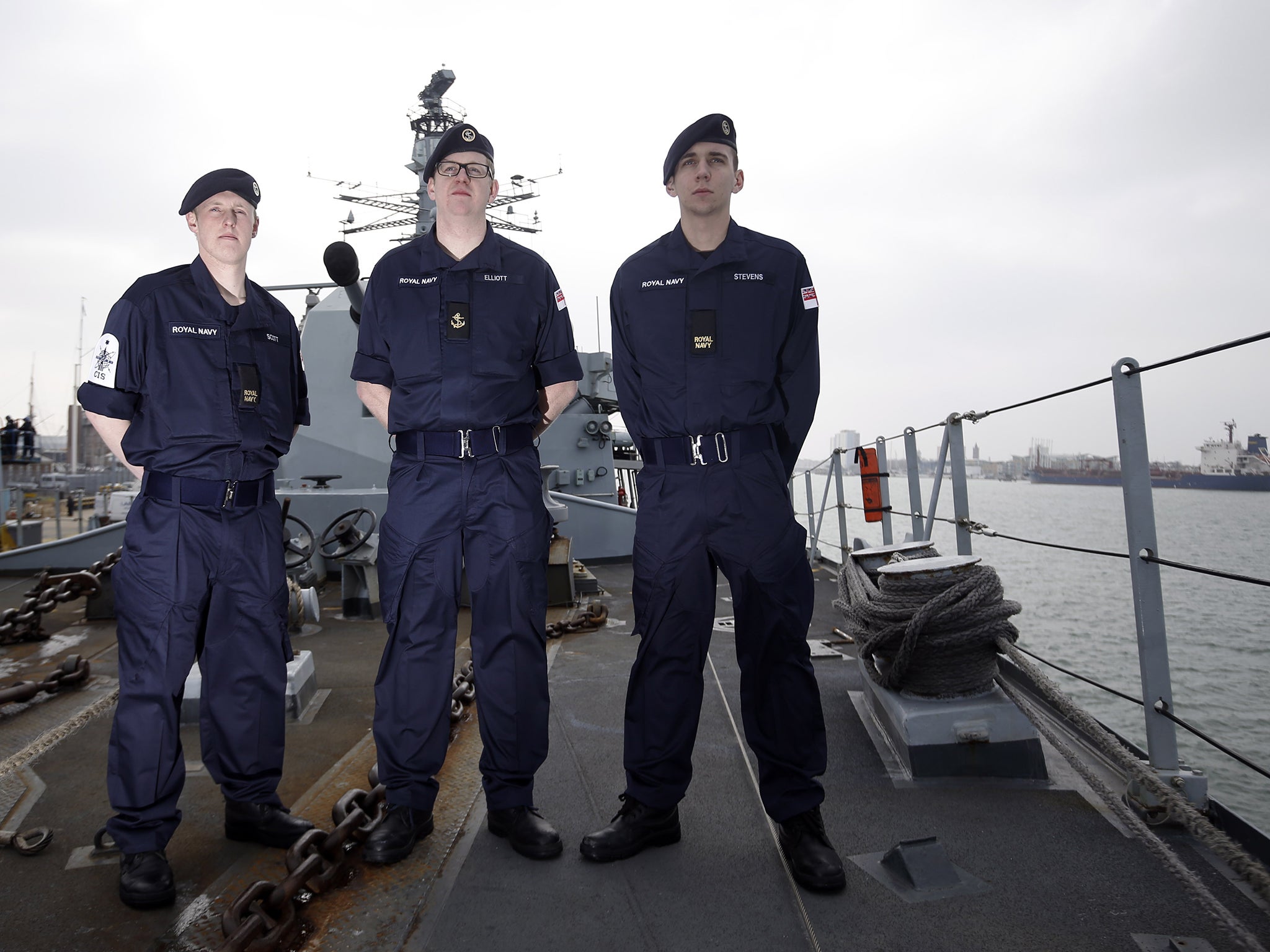Goodbye, bell bottoms: the Royal Navy has got a 'cool' new uniform for the first time in 70 years
The Independent's fashion editor reveals why the nautical new look is making waves

Seventy years is quite a while to wait for a wardrobe overhaul – when it comes, it had better be worth it – but that's how long it has been, roughly, since the Royal Navy last had its uniforms revamped.
However, after a three-year trial period – appropriately enough on HMS Daring, as well as other warships and submarines – 22,000 sets of the new Royal Navy Personal Clothing System (RNPCS, for short) are being issued across the fleet. And it's causing controversy, as change frequently does. But change to something like the Royal Navy (founded in 1660, Britannia ruling the waves and all that) generally gets the traditionalists and reformists alike in uproar. The former see it as indicative of the corrosion of history, the latter as a waste of money and resources for something which, perhaps, we should be questioning whether we need at all.
Neither side seems especially happy about the new uniform, which mimics American trends and incorporates such new-fangled innovations as Velcro (invented in 1948) and baseball caps (from even earlier – the Forties). Thus far it's been compared, aesthetically, to the garb sported by garage mechanics – as well as a bin-liner – by its detractors. However, Commander Peter Laughton of HMS Lancaster (the first ship to sport the new look officially) dubbed it "practical, smart and modern;" the Ministry of Defence echoed that, declaring it "easy to wear" and "cool."
Well, the latter adjective is certainly debatable. And besides, does the Navy really care about looking "cool" while on operational duties? HMS Lancaster is off for a nine-month voyage of more than 30,000 nautical miles in the stuff – so looking dapper is probably low on the list of priorities. (Or, at least, it should be.) That's why it's strange to discuss this from a fashion viewpoint because, really, it's not about fashion. It's about practicality. All that Velcro means the crew can jump into uniform quickly; it's fire-retardant, and has multiple layers to help adapt to variations in temperature. In short, it's about sense over style.
However, maybe practicality is fashionable. Because, oddly, the Navy's uniform is addressing exactly the issues currently plaguing high fashion – adaptability to climate being the most important. Chanel is staging its latest show in Korea; Dior is upping sticks to Los Angeles less than a week later. And when it comes to retail, clothes now need, simultaneously, to work for people "from the Antarctic to the Gulf". Except that quote isn't from a fashion house, but from Vice Admiral Sir David Steel, who spearheaded the uniform upheaval in his previous post of Second Sea Lord.
Despite the MoD's recent assertion, in the Gulf or the Pacific it's more important to feel cool than look it.
Hence, this is not the place to bemoan the absence of braid, epaulettes and other gewgaws, nor to tub-thump for the reintroduction of the white and blue uniform of a hundred years ago. That's just the uniform the fashion business thinks of, uniformly, when considering naval style: the Irish designer JW Anderson's spring womenswear collection being the most recent to filch from and fetishise the style, with striped borders, scarf necklines, and the horizontal-buttoned fly-flap that Quentin Crisp dubbed the "crowning aphrodisiac feature" (albeit displaced to the rear).
The 1945 uniform – the one we're phasing out, known as Action Working Dress or No 4s – offered no such sartorial joy. The best that could be said of it, from a fashion point of view, is that the pale blue shade has been ironically co-opted many a time by Miuccia Prada.
It cropped up a bit in her spring 2015 collection, ironically dedicated to "boring fashion".
And the vast majority of uniforms are boring. That's why these Navy uniforms look like mechanics' garb – because both are workwear, first and foremost, with form following function.
It is the stuff to wear when you are actually manning a ship, not just trying to look ship-shape.
Join our commenting forum
Join thought-provoking conversations, follow other Independent readers and see their replies
Comments